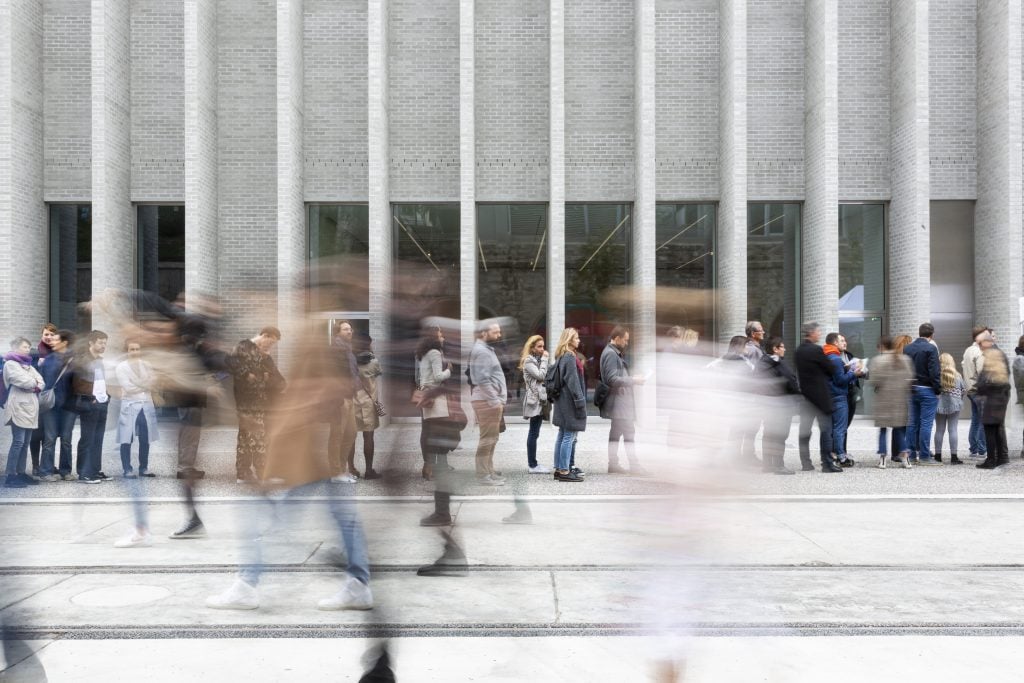Museums & Institutions
Looking to Put Itself on the Cultural Map, the Swiss City of Lausanne Just Opened a New Art Center the Size of Five Football Fields
Plateforme 10 brings together three museums and cost over $200 million to build.

Plateforme 10 brings together three museums and cost over $200 million to build.

Anna Sansom

A vast new arts hub called Plateforme 10 has opened in the Swiss city of Lausanne with the aim to revitalize the surrounding area through culture. Poised to become a new “arts district,” Plateforme 10 spans 25,000 square meters, the equivalent of five football fields.
Located in a former car-repair factory near the train station, Plateforme 10 encompasses a new building for the Photo Elyée museum and the Musée Cantonal de Design et d’Arts Appliqués Contemporains (MUDAC), as well as cafés and restaurants.
Lausanne’s art scene has been long overshadowed by those of Geneva, Zurich, and Basel. The level of investment in the new project is a testament to the city’s desire to compete. The new building cost CHF 200 million ($207.2 million), 40 percent of which was financed by the canton (or regional government), 20 percent by the city of Lausanne, and 40 percent by investors, organizers said.
Designed by Portuguese architects Aires Mateus (brothers Manuel and Francisco Aires Mateus), the new edifice houses Photo Elysée, conceived as a “black box,” on the ground floor, and the MUDAC, conceived as a “white box,” on the second floor.
Also on site is a building designed by the Catalan architectural agency EBV (Estudio Barozzi Veiga) for the Musée cantonal des Beaux-Arts (MCBA), which opened two years ago. All three museums—Photo Elysée, MUDAC, and MCBA—were previously in separate buildings.
“The MCBA was in a former palace and the other two were in mansions, none of which was predisposed to museum activity,” Patrick Gyger, Plateforme 10’s managing director, told Artnet News. “The idea was to unite the three museums on the same site.” The new construction enabled MCBA to triple its exhibition space.

The public waits in line outside MCBA © Etienne Malapert.
Initially, the city of Lausanne proposed to relocate the MCBA to the Bellerive district along Lake Geneva. However, the canton’s residents voted against the proposal in 2008 in a referendum. The canton then began hunting for a different site and decided to launch a larger, overall project merging the three museums, which developed into Plateforme 10.
“The site of the former car repair factory is gigantic and relatively calm and it means we can coordinate exhibitions along a common theme,” Gyger said. “Inaugurating a new, huge art center doesn’t happen often.”
Over the next few years, he hopes that Plateforme 10 will also diversify its programming to include performing arts and artists’ studios.
MUDAC opens its doors with the inaugural exhibition ‘Listening to the Earth,” featuring design, ceramics, glass art, graphic arts, and jewelry by 28 contemporary artists and designers from the museum’s collection.
Among the highlights are Tomáš Libertíny’s The Seed of Narcissus (2011), a silvery blown-crystal sculpture containing beeswax; Laure Gonthier’s La tendresse des pierres II, Trio (2015), kaolin clay sculptures lit by neons, and Anaïs Dunn’s Tension Paysage (2021), which comprises blown-glass pendants suspended from an infrasound framework.
On the ground floor, Photo Elysée opens with “Crossing Lines,” an exhibition that traces the relationship between the history of the railway and the history of cinema, and exploring how early experiments in the two fields intersected.
In Gyger’s words, the opening exhibitions “pay tribute to the site’s original vocation and its close proximity to Lausanne’s main train station, a stop along the mythic Venice Simplon Orient-Express.”
Both exhibitions at MUDAC and Photo Elysée run until September 25th, 2022.